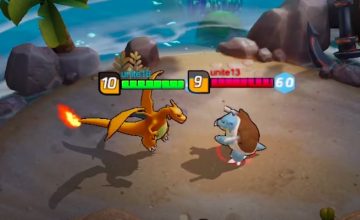At least once in our lives, we had that shiny dream of reaching space in whatever way possible: as an astronaut, an accidental UFO witness, or… a virtual boarding pass with your name on it. But unlike us, a Filipino college student just had quite an extraordinary experience at the largest space station—and it’s a helpful one to boot.
Last year, we heard about William Kevin Abran, a third-year applied physics student from University of the Philippines Los Baños. After the selection process for the Asian Try Zero-G 2022 (ATZG) competition—which gathered 201 submissions from 480 students, by the way—his experiment proposal entitled, “Rotation of Dumbbell-shaped objects in Space” made the final cut, along with five other proposals from Japan, Singapore, Taiwan, and Thailand.
The 21-year-old student’s experiment aims to get a closer look into the rotating behavior of dumbbell-shaped objects in microgravity. As stated in the Japan Aerospace Exploration Agency’s (JAXA) website: “The ‘dumbbell-shaped’ rotating body can rotate along a horizontal axis around a vertical axis, and has only two main moments of inertia, so rotation along the main axis is stable and the Dzhanibekov effect is not expected to occur.”
FYI, the Dzhanibekov effect, or the dancing screw in motion, happens when the “direction of the rotation reverses 180 degrees when the axis of rotation is kept constant for a while, and then rotates 180 degrees back to the original direction again after another while,” as described in the overview of William’s experiment on the JAXA site.
On Jan. 17, this proposal was finally conducted on “Kibo,” a.k.a. The Japanese Experimental Module, JAXA’s first human-rated space facility on the International Space Station (ISS), the largest human-made single structure in space. Astronaut Wakata Koichi spearheaded the experiment, and later showed that the object moved as expected. Meanwhile, the Dzhanibekov effect was not evident during the experiment, but it can’t be ruled out at the moment, the Philippine Space Agency reports.
“Based on preliminary observation from our experiment ‘Rotation of Dumbbell-shaped object in Space,’ we are able to show that the rotation of rigid objects with only 2 unique principal moments of inertia is stable,” tells William on a Facebook post last Jan. 18. The gallery of photos show that there were empty seats at the main location, and that William was able to participate via livestream.
William feels honored that astronaut Koichi performed his proposal. “The result was satisfying knowing that the dumbbell shapes behaved as predicted,” he said, as quoted by the PhilSA. “Also, watching the experiments proposed by students from other countries gave me a new perspective about the microgravity environment. Hopefully, this initiative inspires more students to continue doing research and be curious about the world around us.”
“At the time [when the experiment was being conducted], I was both thrilled and honored. I was very happy that our predictions were right and we are literally seeing it happen in space,” William says in an exclusive chat with Scout.
Apart from it being a once-in-a-lifetime experience, William’s brainchild could contribute in the area of spacecraft design, and become a real-life nod to Newton’s Laws of Motion and Ehrenfest Theorem of microgravity.
When asked about what else he’d like to explore in his field, he reveals, “Later on, I still hope to continue in the space industry. Hopefully become a space scientist or a rocket scientist.”
But for now, he’s set to flesh out the results of the experiment. In William’s words: “It’s paper writing time!”
Read more:
A UP student’s experiment will be conducted on the International Space Station
Here are some local UFO sightings throughout history, for your tinfoil hat thoughts
Come in peace: An interview with UFO expert Dr. Jaime Licauco on local alien sightings
Photos (1) courtesy of William Kevin Abran and (2) Philippine Space Agency/NASA/Jaxa
Video from NASA/Jaxa
























Comments